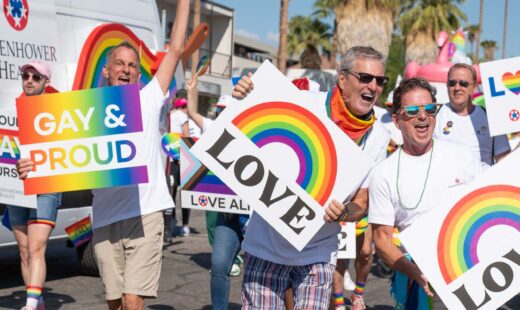They came by ambulance. In taxis, Ubers, and Lyfts. Huddled in the back of private cars and piled, one on top of another, into the beds of pickup trucks.
The victims of the Oct. 1, 2017, mass shooting at the Route 91 Harvest music festival in Las Vegas, which claimed the lives of at least 58 people and injured more than 489 others, quickly inundated the emergency departments of area hospitals. Triage and treatment of the victims spilled out into hospital hallways, lobbies, and ambulance bays.
The number of healthcare professionals and support personnel who responded to calls for help, or who voluntarily rushed to their employing facilities to aid victims, also surged.
In seemingly endless waves, University Medical Center of Southern Nevada (UMC) received 104 patients with gunshot wounds or trampling injuries, enough to strain even this Level 1 trauma center accustomed to seeing influxes of patients.
CEO Mason VanHouweling told the Las Vegas Sun that about 300 staff members voluntarily headed to the hospital upon hearing news of the shooting.
“We didn’t have to call people. They just came,” he said.
Some of the clinicians who responded didn’t need to think twice about it. Others faced a unique twist on the dilemma experienced by some of their colleagues who attended the music festival. As bullets rained on attendees, nurses and physicians who were there faced a harrowing decision: Do I stay and help victims, or flee to protect myself? When news of the shooting broke, off-duty nurses and other hospital staff who were safe in their homes had their own decision to make: Do I go to help victims, or do I stay to take care of myself or my family?
Jon Dimaya, RN, works at Sunrise Hospital & Medical Center, where 180 attendees of the music festival were transported, 124 of them with gunshot injuries. On Facebook, he poignantly recounted learning of the nighttime shooting while at home with his four sleeping children. He called his wife, also a nurse, who was on duty at another hospital as victims arrived.
“I know they (the hospital) need you to come in and you want to know if it’s okay to leave the kids alone,” Dimaya said his wife told him. “You don’t ever have to ask me. Please go in and save as many lives as you can.”
Dimaya arrived at Sunrise to find what so many responding staff likened to a war zone.
“It [was] nothing like you’ve seen before,” he told AZCentral. “It was like it was a battlefield with soldiers who were just shot.”
Hospitals: A New Battleground
Dimaya’s comparison isn’t far-fetched. A dramatic rise in active shooter events across the U.S., documented by the FBI in 2014, has placed hospitals — big and small — on the frontlines of civilian battlegrounds.
It seems few, if any, modern-day incidents have been as spot-on with the battleground analogy as the Las Vegas shooting. Emergency personnel reported being unaccustomed to seeing scores of such extensive, shrapnel-laded wounds from semi-automatic rifle fire. UMC called in reinforcements: general and trauma surgeons from Nellis Air Force Base, who the hospital’s chief of trauma surgery told The Washington Post “were used to seeing those things.”
Air Force Maj. Charles Chestnut, a general surgeon with the 99th Medical Group at the nearby base who rushed to UMC on his own accord, had indeed seen those types of wounds before.
“I never thought that I would see this type of mass-casualty [event] stateside,” he said in an Air Force interview. “This is the kind of thing that happens at Bagram [Air Base in Afghanistan] or in Iraq or Syria, not Las Vegas, Nevada.”
The Military Model
Chestnut credited his extensive military training, which keeps him and his active duty colleagues in a constant state of readiness, although he conceded, “I don’t think anyone could prepare for 100…patients with gunshot wounds.”
Yet military expertise in treating the wounded in combat zones has, in fact, helped civilian hospitals better prepare for and respond to active shooter events inside the U.S.
A 2016 report by the National Academy of Sciences detailed the decline in critical mortality of wounded U.S. service members between WWII (in which 30% of wounded soldiers died) through the Afghanistan and Iraq conflicts (which, at the time of the report, claimed the lives of less than one-tenth of combat-injured soldiers). Better protective gear accounted for some of the decline, the report said; but incremental improvements in trauma care in combat zones, as well as rapid learning from experiences in the field, saved more lives.
A number of these wartime improvements have made their way into the clinical processes of civilian hospitals responding to mass shooting events.
Taking a page from the military method, for example, EMS personnel train their attention on symptoms of hypothermia, one side of the so-called trauma triad of death, as well as monitor permissive hypotension in patients with gunshot wounds. Some first responders administer tranexamic acid, or TXA, an antifibrinolytic that helps stabilize clots in patients with deep, inaccessible vascular wounds. Others now mimic their military counterparts in Iraq and Afghanistan by using small power drills to insert needles for delivery of IV fluids directly into bone marrow.
In hospitals, damage control resuscitation and damage control surgery — quick, stopgap-like procedures that prioritize control of hemorrhage over definitive operations — have been successfully transplanted from the Afghanistan and Iraq wars to civilian surgical suites. In homegrown mass casualty events, surgeons now focus on performing life-saving procedures as quickly as possible and moving on to the next case, rather than addressing all of a patients’ surgical needs at once. Less imminent threats to mortality — non-lethal shrapnel lodged in an extremity, for instance — are addressed at a later time.
Mission One: Hemorrhage Halt
The most highly touted innovation taken from modern combat zones, however, involves centuries-old battlefield technology: the tourniquet.
Hemorrhage represents the most preventable cause of death in active shooter incidents. The application of tourniquets to stem bleeding was thought to damage tissue, destroy nerves, and lead to limb loss — due principally to the length of time they were left in place — and their use fell out of fashion in medical circles until about a decade ago. Since then tourniquets have made a strong comeback based on the availability of fast emergency transport to hospitals and the military’s findings of improved survival rates in wounded soldiers on whom compression and bandaging was used.
In the wake of mass casualty shootings on American soil, an informational campaign to combat hemorrhage from gunshot wounds has gained momentum. The federal Department of Homeland Security, FBI, and other federal agencies joined the medical community to support an initiative called the Stop the Bleed campaign. Launched by the American College of Surgeons, the public education program grew from the Hartford Consensus, an agreement among members of the medical community, government agencies, and other organizations that created a national protocol for improving the survivability of shootings and other mass trauma events, based in significant part on military successes.
The campaign encourages health professionals who are away from their practice settings during an active shooting or other mass casualty event — and, importantly, bystanders — to apply tourniquets to extremity wounds. News reports indicate that festival-goers in Las Vegas employed belts as tourniquets among many of the wounded.
Copying another military move that equips frontline soldiers with tourniquets and other trauma supplies in the field, several states aim to install bleeding trauma kits in public spaces, including airports and schools. In 2017 the California legislature introduced a bill, AB909, which seeks to mandate the installation of bleeding control kits alongside automatic defibrillators throughout the state.
Rally Cry
If hospitals represent the new front in combatting the effects of mass shooting events, then healthcare professionals serve as the foot soldiers. In the harsh reality of American active shooter incidents, emergency and critical care clinicians, as well as hospital support personnel, must be as prepared as any service member to engage in intense battles to save lives.
The Las Vegas shooting tested the courage, strength, and resolve of responding nurses, physicians, and other healthcare professionals, both in the hospital setting and at Ground Zero. Their colors flew, and they deserve the gratitude of the nation.
As with previous mass shootings, scars will linger — in the injured, in those who lost loved ones, and in the healthcare workers who fought valiantly to curb the carnage. For his part, nurse Dimaya wants his fellow Las Vegans and healthcare colleagues to know those scars will only toughen their shared dedication to their community.
The day following the deadly attack, Dimaya stood at a Las Vegas intersection with one of his children, holding a sign with a message borrowed, in part, from a Nevada rallying cry used during the Civil War.
It read:
We Are Las Vegas
We Are Strong
We Are Battle Born
At Eisenhower Medical Center, we continue to keep in our thoughts those who were injured during the Las Vegas shooting incident, those who lost loved ones, and the healthcare professionals who continue to provide compassionate care to the members of their community. Their experience has strengthened our own resolve to provide the education, tools, and support our team of emergency and critical care professionals need to respond to the needs of our own community. Visit our Careers page to learn more about us.
Originally posted on 11/10/2017



